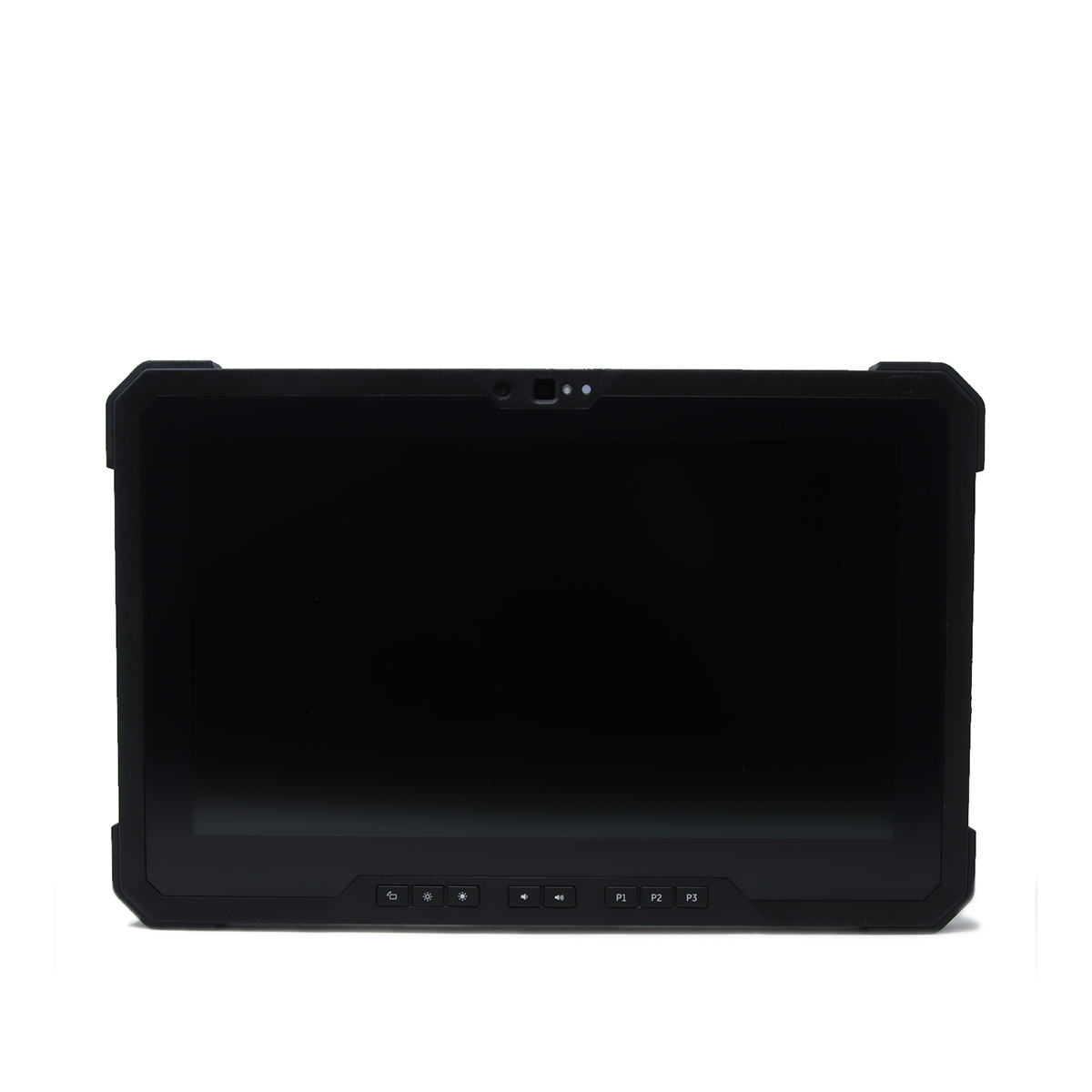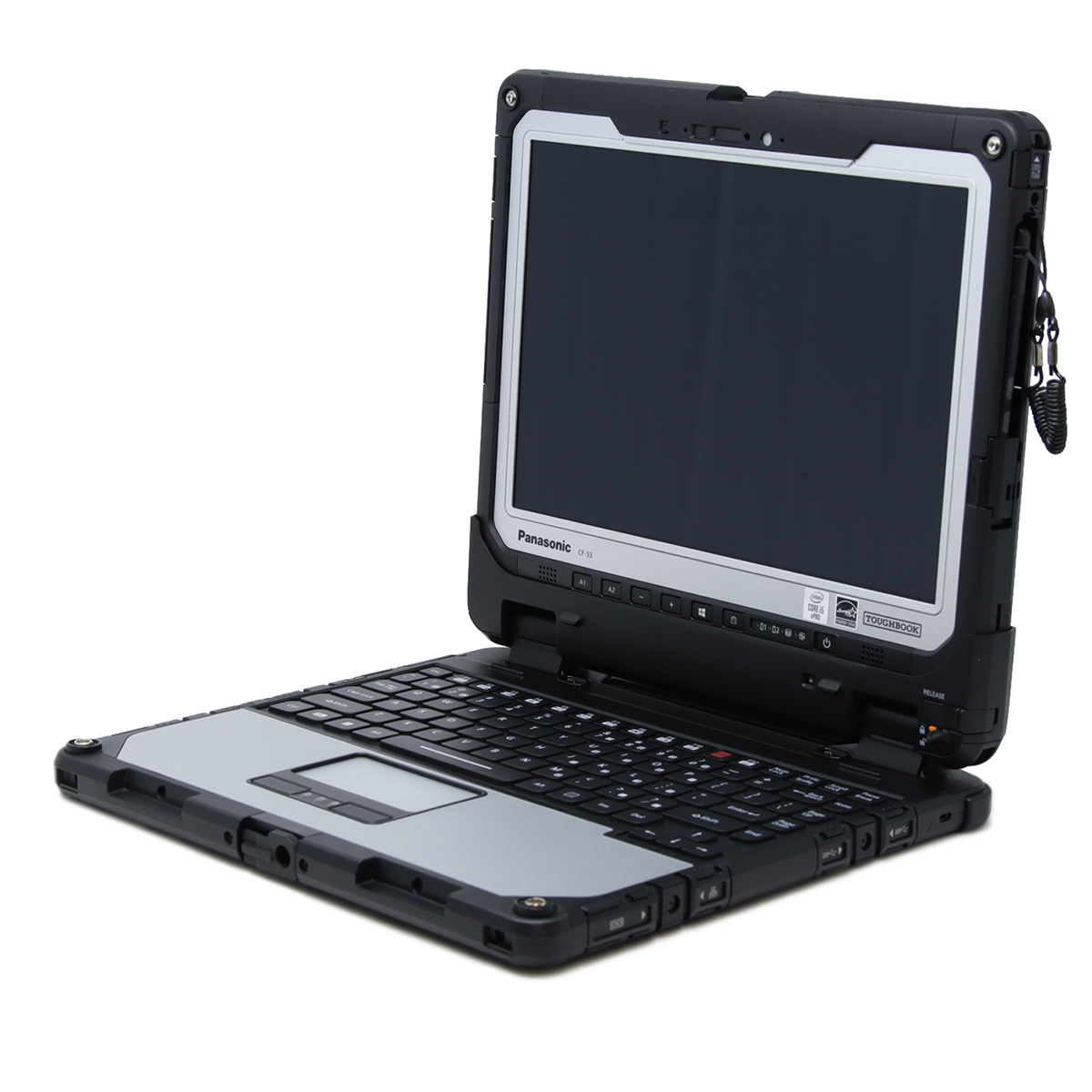How Rugged Laptops Handle Extreme Temperatures
Posted by Doran Janeka on 21st Nov 2025
Many essential industries depend on reliable access to data in the field. However, several factors, ranging from vibration and water ingress to dust, can disrupt that reliability.
Temperature is an even bigger challenge because consumer-grade computers cannot operate in extreme heat or cold like rugged laptops or tablets can. Rugged laptops prevent these problems by staying functional in harsh climates. Extreme temperatures place heavy stress on processors, batteries, and displays.
Rugged systems avoid these issues through specialized thermal engineering and reinforced materials that protect the device in difficult conditions. These designs help the laptop stay stable in snow, desert heat, and rapid temperature swings. That reliability gives field teams dependable uptime.
Who Relies on Rugged Laptops?
Many industries face challenging conditions every day, so rugged laptops must deliver steady performance anywhere work takes place.
Some examples of professionals who rely on computers that remain dependable in outdoor settings and fluctuating temperatures include:
 First responders – Firefighters, police, and paramedics work in unpredictable environments. Their laptops must stay operational during emergencies. Reliable performance supports fast decisions.
First responders – Firefighters, police, and paramedics work in unpredictable environments. Their laptops must stay operational during emergencies. Reliable performance supports fast decisions.- Military personnel – Military teams need systems that operate in deserts and arctic regions. Rugged laptops support communication and mission data access.
- Public safety and utilities crews – These workers maintain grids and pipelines in difficult weather.
- Construction and industrial teams – Job sites expose equipment to dust, vibration, and other harsh conditions. Rugged laptops help crews stay productive.
- Outdoor professionals – Surveyors and field engineers depend on equipment that remains stable in remote terrain.
Why Rugged Laptops are the Clear Winner When it Comes to Temperature Performance
Temperature has a major impact on how well a laptop performs outdoors. That difference becomes clear when you compare consumer laptops with rugged models.
Consumer laptops are built for controlled indoor environments and typically support ambient operating temperatures of 50 °F to 95 °F (10 °C to 35 °C).
Outdoor heat beyond this range leads to rapid battery drain, reduced performance, and potential drive damage. High humidity also increases the chance of internal moisture and corrosion.
Cold weather creates problems, too. For example, batteries lose capacity, or LCD panels can slow down. Additionally, mechanical drives may fail to start. Even worse, plastics can contract and crack in freezing conditions. These limits make consumer laptops unreliable outdoors.
Rugged laptops, on the other hand, avoid these problems with hardware designed for extreme temperatures. Many operate from about –20 °F to 145 °F (–29 °C to 63 °C).
That wider range keeps them stable in severe heat and bitter cold. It also helps field teams stay productive during rapid temperature changes.
How Rugged Laptops Manage Heat and Cold
Rugged laptops survive temperatures that disable standard computers. They accomplish this by using heating, cooling, and reinforced materials to keep internal components stable in harsh outdoor conditions.
Keeping Components Working in Freezing Conditions
Cold weather slows electronic components and reduces battery efficiency. Rugged laptops use several design strategies to stay operational in freezing climates.
- Heated Storage Drive Compartments: These compartments use controlled heat to warm the drive housing. The steady temperature helps prevent slow performance during cold starts.
- Cold-resistant Chassis Materials: Reinforced polymers and metal frames protect the device when temperatures drop. These materials resist contraction and cracking that can damage internal components.
- Low-temperature Battery Chemistry: Rugged laptops use battery chemistries that continue to provide power in cold environments. Standard lithium-ion cells lose capacity much faster at low temperatures.
- Cold-rated LCD Panels: LCD fluid thickens in cold weather, which slows response time. Cold-rated panels stay responsive and reduce blurring in freezing conditions.
These features support fieldwork in winter conditions, at high altitudes, and in cold storage facilities.
 Avoid Overheating in High-Heat, Harsh Environments
Avoid Overheating in High-Heat, Harsh Environments
Outdoor work and high temperatures place a lot of pressure on a laptop. In fact, they both cause internal heat to rise quickly, which puts stress on the processor. Sunlight exacerbates this process, causing internal temperatures to rise even faster.
Fortunately, rugged laptops feature heat-resistant materials and cooling systems, enabling them to address these challenges. All internal parts remain stable, even as temperatures rise.
There are many features that work together to protect the system and control heat, including:
- Heat absorption is limited by heat-reflective coatings.
- The impact of ambient heat and direct sunlight is reduced by thermal shields.
- Heat is pulled away from the processor by copper heat pipes.
- Fans can move more air via wide airflow pathways.
- Heat-resistant exterior materials make sure your laptop and components will maintain their shape, regardless of how hot it is
These connected features ensure you have a reliable rugged laptop in wildfire zones, industrial facilities, and desert climates.
Testing the Temperature Resistance of Rugged Laptops
The purpose of a rugged laptop is to keep performing, even after consumer devices have failed. Therefore, manufacturers rely on controlled laboratory tests to verify that each system can withstand extreme temperature swings, including both extreme cold and heat. Established industrial and military standards are utilized to show how a laptop will perform in real field conditions.
 MIL-STD-810 Temperature Test
MIL-STD-810 Temperature Test
MIL-STD-810 includes several tests, including high-temperature, low-temperature, and temperature-shock testing. During the high-temperature test, the rugged laptop is kept in a heated chamber for an extended period. This shows the impact of high ambient heat and direct sunlight. Meanwhile, low-temperature tests confirm that the laptop can start, run, and shut down without damage in freezing environments.
Finally, the temperature-shock tests will ensure the laptop can move quickly between cold and hot conditions. Overall, these tests are intended to identify condensation issues, material stress, and sudden failures.
Additional Field Durability Tests for MIL-STD-810
Rugged laptops must also undergo several other tests to simulate real-world hazards to confirm reliability. These include:
- Impact resistance is measured in a drop test, which also confirms that the chassis can withstand work-height falls.
- Vehicle travel, machinery, and rough terrain are stimulated in vibration tests.
- High moisture levels are checked by exposing the system during a humidity test.
- The protection offered against airborne particles is tested during dust and sand tests.
- Altitude tests verify that a rugged laptop can operate in low-pressure environments.
- Simulated blowing water and heavy rainfall are used in rain tests.
The purpose of these tests is to demonstrate how well the device can withstand combined stress from weather, motion, and equipment vibrations.
Ingress Protection (IP) Ratings
IP ratings help define a rugged laptop’s resistance to water and dust. For example, an IP65 rating confirms the laptop is dust-tight and protects against water jets from any direction. By checking the IP rating, you can select the right laptop for your field work in windy, dirty, or wet environments.
Why Do These Tests Matter?
Your rugged laptop will be exposed to multiple hazards during outdoor work. Dust can infiltrate the ports, heat can affect processors, and internal components are stressed by vibration. Additionally, it’ll face even more challenges due to rapid temperature swings, cold, heat, and rain. Rugged laptops are designed to keep performing, even in the worst conditions. Running these testing standards will give field teams the confidence they need to keep working, regardless of ever-changing conditions.
Real Operating Temperature Ranges for Getac, Panasonic, and Dell Rugged Laptops
Not all rugged laptops perform the same in extreme temperatures. Each manufacturer designs its systems with different thermal tolerances, materials, and cooling technologies. Still, most rugged models offer far better temperature ranges than consumer laptops. The operating temperatures below reflect typical ranges for fully rugged systems.*

- Getac Rugged Laptops: Most Getac models operate from about –29 °C to 63 °C (–20 °F to 145 °F). Getac designs its systems with advanced heat pipes and durable magnesium-alloy frames that evenly distribute heat.
- Panasonic Toughbook Laptops: Many Toughbook models run from about –20 °C to 60 °C (–4 °F to 140 °F). Panasonic uses reinforced polymer housings and cold-rated LCD panels for winter environments.
- Dell Rugged Laptops: Dell’s rugged line often performs from about –29 °C to 63 °C (–20 °F to 145 °F). These systems use sealed cooling pathways and heavy-duty chassis materials to manage heat and cold.
These ranges make rugged laptops ideal for field work that exposes equipment to snow, heat waves, rapid temperature swings, and unpredictable weather. Their thermal engineering allows teams to operate even when consumer laptops would fail immediately.
*Note: These ranges apply to operating ambient temperature for the specific rugged models listed — not all models in the lineup will necessarily match exactly. For example, some options (such as a DVD drive or a second storage device) may limit the range.
Additional Rugged Features That Support Field Work
Temperature is only one reason professionals depend on rugged laptops. These systems include several other features that protect the device during outdoor work and mobile operations.
- Shock-absorbing frames
- Sealed keyboards and ports
- Sunlight-readable displays
- Hot-swappable batteries
- Strengthened hinges and mounts
Together, these features enable rugged laptops to withstand dust, vibration, moisture, and mechanical stress.
When to Choose a Rugged Laptop Instead of a Consumer Laptop
Teams that depend on mapping software, diagnostics tools, situational awareness programs, and communication platforms benefit most from rugged hardware. These laptops allow them to work without worrying about shutdowns or data loss when conditions get rough.
 Find the Rugged Laptop That Fits Your Work
Find the Rugged Laptop That Fits Your Work
The right rugged laptop for you will depend on the software, environment, and conditions you face daily. The good news is that Bob Johnson’s Computer Stuff has rugged laptop experts ready to help you find the perfect match for your needs.
Their team works with construction crews, first responders, field professionals, utilities, and mobile technicians in need of dependable technology. In other words, their rugged computers won’t shut down, regardless of temperature drops or spikes.
Bob Johnson offers reliable performance at different price points. For instance, we offer rugged laptops from Getac, Dell, and Panasonic. These come in a variety of styles, including the latest models, scratch-and-dent options, and refurbished systems. Therefore, no matter what your budget is, Bob Johnson’s Computer Stuff can get you set up with a rugged laptop.
Do you need a device that’s built for cold, heat, vibrations, or field work? Reach out to Bob Johnson’s specialists! They’ll ensure you find the right rugged laptop for your needs. Check out their current line of Rugged Computers today!

